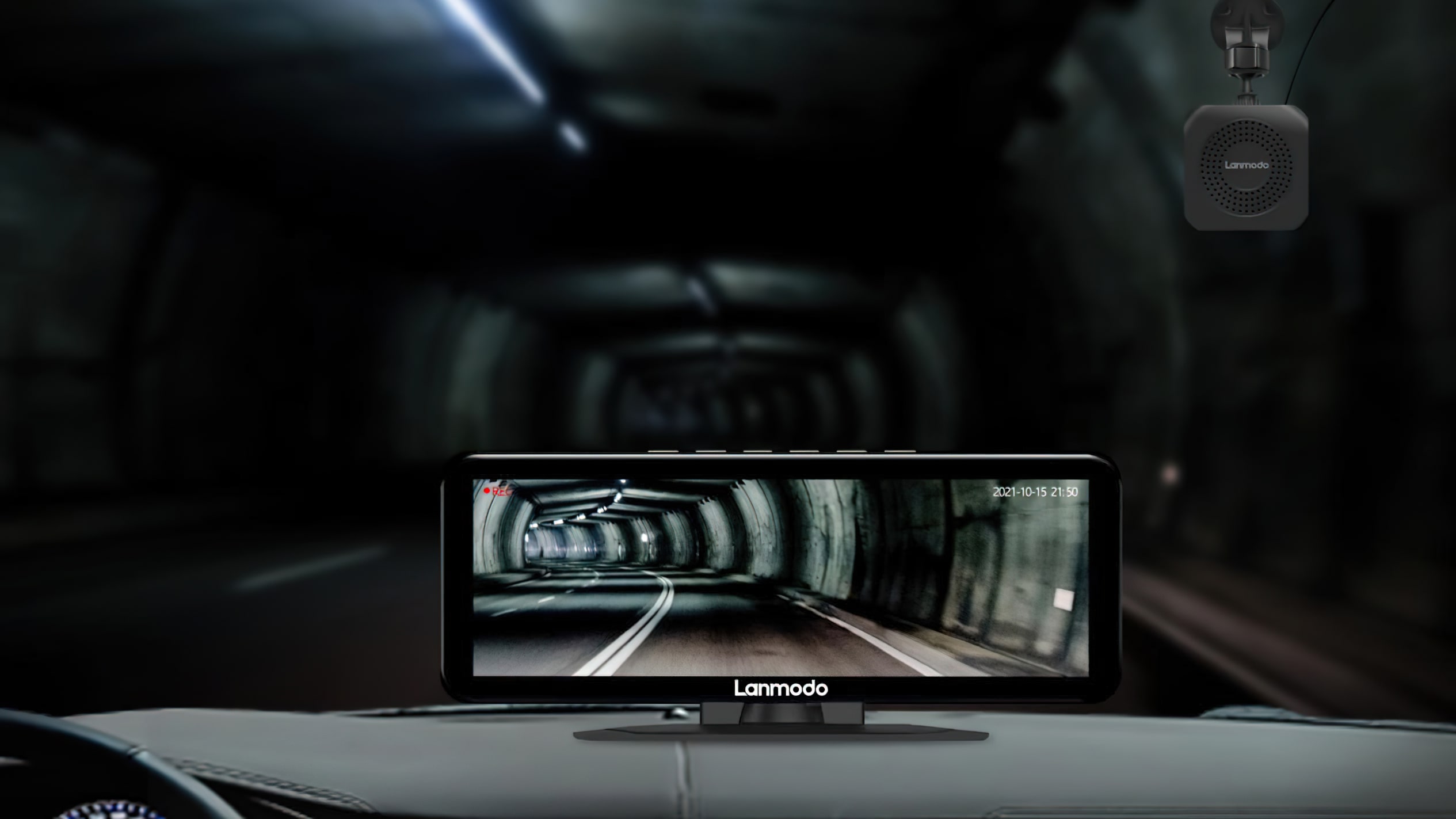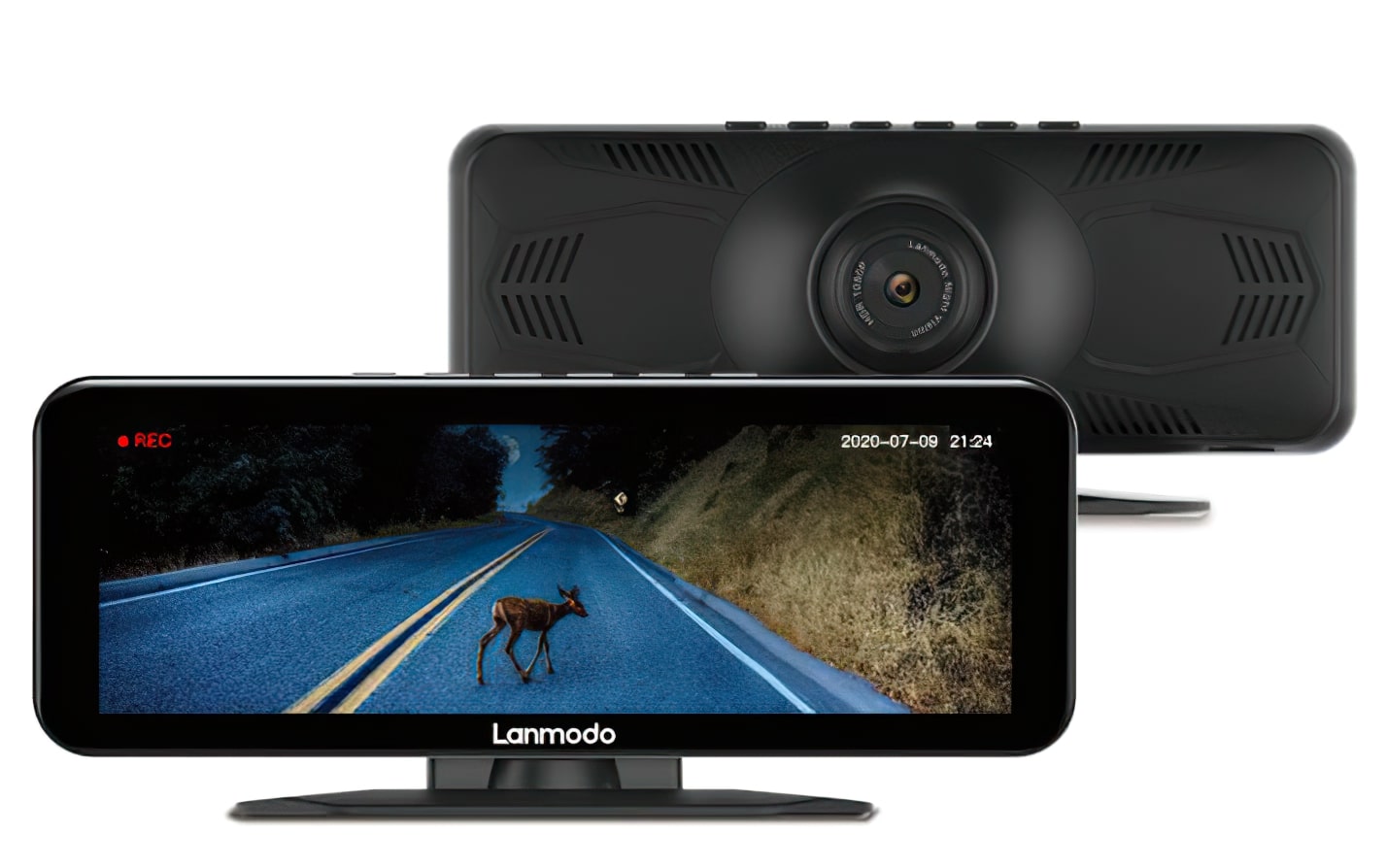
Unlike the Oculus Rift S, the Oculus Quest doesn’t technically want a PC in an effort to play VR games. Instead, it’s a standalone VR headset that you would be able to play utterly wire-free with out having an awesome massive gaming PC at your disposal. Naturally, this implies it’s not fairly as highly effective as a PC-based headset, and the games you’ll be able to play on it are restricted to what’s out there on Oculus’ devoted Quest retailer. You’ve nonetheless obtained a number of the best VR games in there, akin to Beat Saber, Pistol Whip and Superhot VR, however they’re separate variations of those you’ll be able to play on the Rift and Rift S. If you personal Beat Saber on Steam or the Rift retailer, for instance, that doesn’t imply you’ll be able to play it on the Oculus Quest.
However, due to the latest beta launch of Oculus Link, you’ll be able to actually use your Quest to play Oculus Rift games now, in addition to each different sort of PC VR game that was beforehand out of attain. You’ll have to sacrifice its wi-fi capabilities and plug it into your PC through a high-speed USB-C to USB-A cable so as to take action, however it positively beats shopping for a complete new headset simply to play the new new VR game on Steam, for instance, akin to Half-Life: Alyx. Is it value shopping for over the similarly-priced Oculus Rift S, although? Let’s discover out.
For some, the truth that the Oculus Quest offers you the choice of really wi-fi play might be purpose sufficient to plumb for this over the Oculus Rift S, particularly when the entry-level 32GB mannequin at present prices the identical sum of money.
There’s additionally a 128GB model of the Oculus Quest that goes for £499 / $499 proper now, however I’d solely suggest choosing this mannequin if you happen to actually need the comfort of getting a great deal of Quest games put in on the headset on the similar time. After all, any Rift or SteamVR games you wish to play through Oculus Link might be put in in your PC, so the 64GB mannequin must be sufficient for most individuals trying to make use of this as each a wi-fi and PC-based headset.
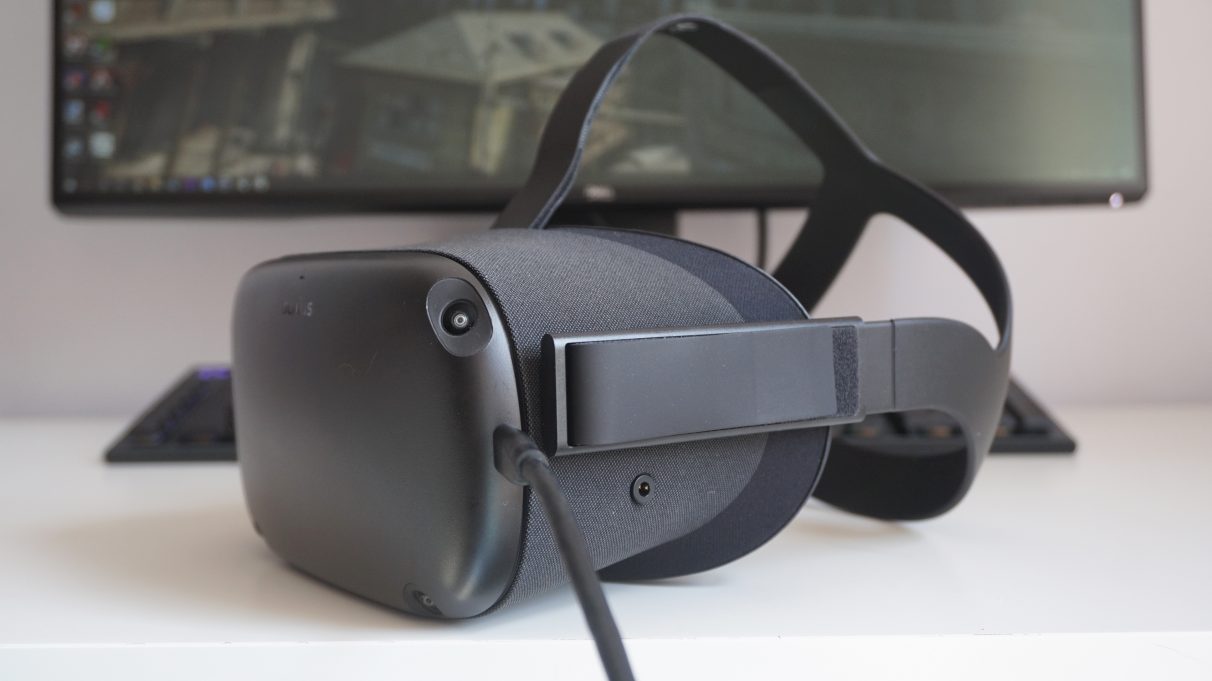
To use the Oculus Quest together with your PC, you’ll want to make use of a high-speed USB-C to USB-A cable.
I have to say, taking part in VR games with out having a wire trailing down my again is immensely releasing, and it makes me want that each one PC VR headsets had built-in wi-fi assist as customary. The HTC Vive Cosmos and Vive Cosmos Elite can be used wirelessly with the acquisition of HTC’s Wireless Adapter add-on, however that alone virtually prices as a lot as a complete Quest headset, going for £353 within the UK and $349 within the US if you happen to purchase direct from HTC. Add that to the price of the usual Cosmos, and also you’re taking a look at over a grand’s value of VR equipment.
The £399 / $399 Quest, then again, is lots kinder on the previous pockets, making it a way more engaging choice for these on a price range. You’ll nonetheless have to spend somewhat further to get it working together with your PC, admittedly, however when all it’s good to do is purchase a high-speed USB-C to USB-A cable (which might be had for as little as £15 / $24), it’s lots simpler to swallow than HTC’s providing.
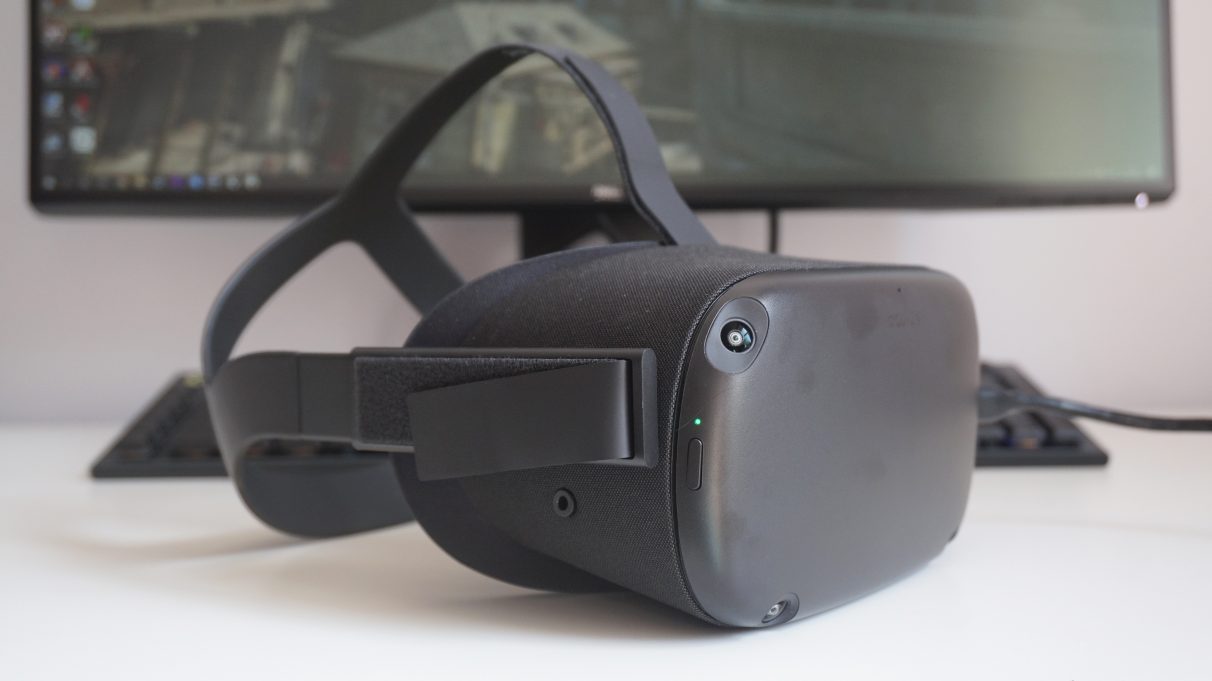
You can discover out extra concerning the precise steps concerned in getting the Quest to work together with your PC in my devoted How to play Half-Life: Alyx on the Oculus Quest information, however basically you want three issues:
- a appropriate graphics card (most of Nvidia’s GTX 10-series playing cards such because the GTX 1060 will work, as will the older GTX 970 and all their new RTX playing cards, and all of AMD’s RX 400 collection playing cards onwards have been authorized to be used as properly)
- a VR-ready PC (Oculus suggest at the very least an Intel Core i5-4590 or AMD Ryzen 5 1500X CPU, 8GB of RAM and an Nvidia GTX 970 or AMD Radeon RX 470 graphics card)
- a high-speed USB-C to USB-A cable
Naturally, Oculus have their very own (and fairly costly) cable for the event, however they’ve additionally authorized a few different cables, such because the aforementioned £15 / $24 one from Anker, which can be lots cheaper. You also can technically use your Quest wirelessly together with your PC as properly by shopping for the $20 Virtual Desktop app on the Oculus Quest retailer, however proper now this isn’t how Oculus Link is meant to work. Indeed, this technique includes a number of further steps that really feel like a little bit of a fudge at occasions, akin to requiring a 5GHz web connection to work reliably and side-loading patched APKs and whatnot, so I’ll be focusing the remainder of this evaluation on how Oculus Quest works through the supposed technique on PC, which is through a wired USB cable.

You can regulate the interpupillary distance of the Quest utilizing the slider beneath the headset, and you too can regulate the amount of its built-in audio system with the all-in-one button on the opposite aspect, too.
The setup course of was surprisingly easy, and took not more than 15 minutes from begin to end. Once I’d allowed the Quest to play non-Oculus games within the settings menu on the Oculus app, the world was my oyster, so I instantly loaded up a little bit of Half-Life: Alyx to check it out. As I discussed in my Best VR headset for Half-Life: Alyx article, the Quest put in a extremely fairly admirable efficiency right here, and that’s regardless of having a barely decrease refresh fee and a narrower discipline of view than its Rift S cousin.
Admittedly, Oculus have by no means specified the Quest’s actual visual view for some purpose, however it’s broadly thought to be being someplace round 90 levels fairly than the extra customary 110 levels you’ll discover on the Rift S, Valve Index and HTC Cosmos headsets. Indeed, there was positively a extra noticeable porthole impact on the Quest, with a thicker black rim circling the display screen, however I wouldn’t say it was notably detrimental to my total VR expertise.
The similar goes for its 72Hz refresh fee. It’s a fraction slower than the 80Hz refresh fee you get on the Rift S, for instance, however in follow I couldn’t inform the distinction in any respect. Both headsets felt equally easy to me, and I didn’t really feel nauseous at any level throughout my month of testing.

The Oculus Quest comes with two Touch controllers – the identical controllers utilized by the Oculus Rift S.
The Quest’s inside-out monitoring felt simply as correct and immersive because the Rift S as properly. I used to be capable of play fast-paced motion games like Half-Life: Alyx with none downside in any respect on the Oculus Quest, and I didn’t expertise any hand drifting or monitoring judder in any way. The Quest’s monitoring capabilities weren’t affected by my workplace’s lighting situations both, and I used to be capable of play games with out subject no matter whether or not it was sunny or overcast outdoors when the curtains had been open, and it didn’t have an issue after I had my workplace lights on in the course of the night, both – which is greater than I can say for the Vive Cosmos.
The Quest makes use of the identical Oculus Touch controllers because the Rift S, too, that are beautiful and light-weight to carry for lengthy durations of time and have splendidly tactile and responsive buttons. It additionally means you’ll be able to reuse your controllers if you happen to determine to improve to a Rift (or ‘downgrade’ to a Quest) too – which, once more, is greater than might be stated for the Vive Cosmos and Cosmos Elite headsets, which require various kinds of controllers.
I’ve to confess, although, having a cable protruding the aspect of the headset was a little bit of a bummer. Since the one port on the Quest is its USB-C charging port on the entrance of the headset, my Anker cable caught out at fairly an angle in comparison with the official, downward-facing Oculus one, and I saved bashing it with my left hand and arm as a result of there was nothing feeding it down over the again of my shoulder like there’s on the Rift S.

The size of 10ft was additionally nearly lengthy sufficient if I stood very near my PC, however after I tried setting it up in my lounge, the place the PC is over by the TV, it was a little bit of a stretch if I wished to sit down down and play games on the couch. The official Oculus Link cable is a bit longer (16ft or 5m, matching the cable you get with the Rift S), however taking place the cheaper cable route positively seems like a little bit of a hindrance.
Where the Quest falls down essentially the most for me, although, is the show and its total construct high quality. Truth be informed, the Quest’s show truly has a better decision than the one on the Rift S, coming in at 1440×1600 per-eye for a mixed decision of 2800×1600 in comparison with the 1280×1440 per-eye (or 2560×1440) decision on the Rift S. The Quest additionally has a extra vibrant OLED show fairly than a standard LCD one, however by way of total readability it’s the Rift S that wins out right here.
That’s principally as a result of the Quest has to funnel all that video and pixel knowledge down the USB-C cable fairly than a correct DisplayPort just like the Rift S, leading to a barely fuzzier, extra compressed image total. It’s not so disastrous that it could put me off utilizing the headset solely, however there’s a noticeable downgrade within the headset’s total visible high quality after I in contrast them one after the opposite. It was much less noticeable in simpler-looking VR games, akin to Beat Saber and Space Pirate Trainer, however detail-packed games akin to Half-Life: Alyx positively seemed lots crisper on the Rift S.
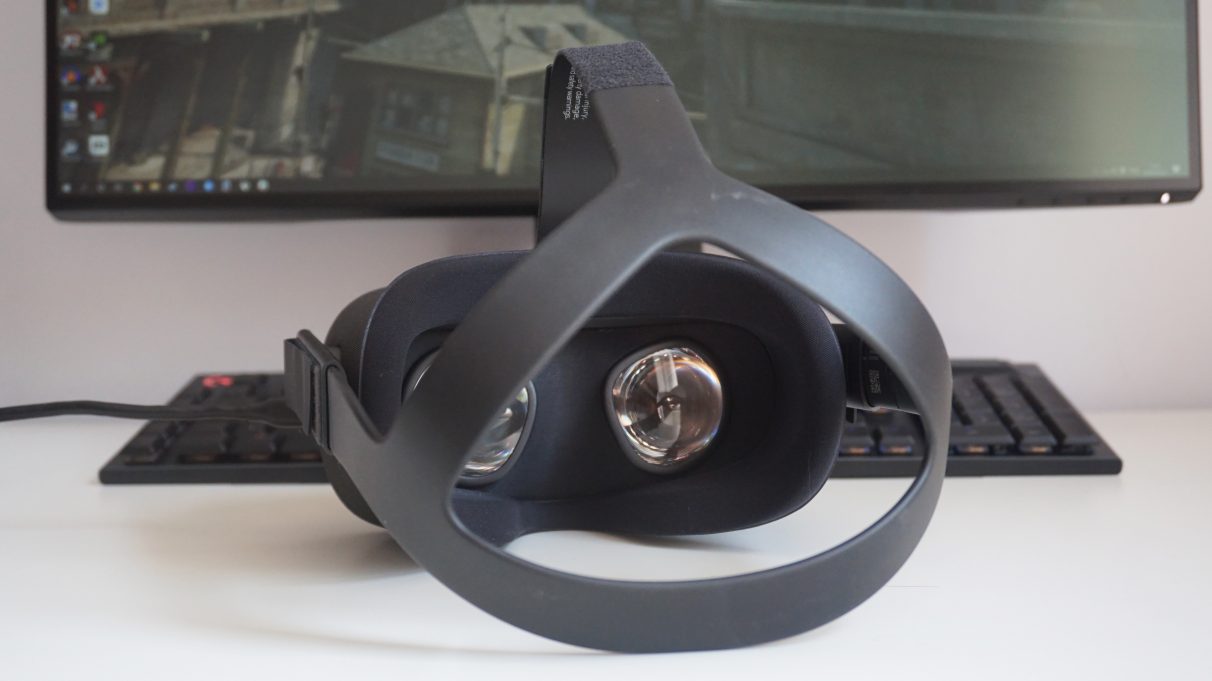
Unlike PC VR headsets, the Oculus Quest doesn’t have a rear dial management. The solely technique to get a cushty match is to make use of the velcro straps on the highest and sides of the headset.
I additionally discovered it fairly uncomfortable to put on for lengthy durations of time. Unlike the Rift S, for instance, there’s no rear adjustment dial on the Quest, so your solely technique of getting a comfortable match is to make use of the velcro straps on the highest and aspect of the headset. This was effective for essentially the most half – even for somebody with a smaller than common head like myself – however it does imply the Quest is overly top-heavy, as there’s nothing there to assist anchor the headset to the again of your head. Combine that with its comparatively minimal quantity of face padding across the entrance of the headset, and it shortly turns into fairly painful. Every Quest session would finish with massive marks on my cheeks and the highest of my nostril, and I couldn’t actually tolerate rather more than 30 minutes at a time. The Rift S, then again, is lots simpler on the previous cheekbones and I may typically put on that headset for a great hour or so, if no more, earlier than my face obtained a bit sizzling.
As a end result, I might in all probability nonetheless go for the Oculus Rift S if given the selection, if solely as a result of it’s extra nice for me to make use of frequently. I do like how the Quest offers you the choice of wired and wi-fi play (together with that vast library of Quest, Rift and SteamVR games), and the Oculus Link tech itself is very spectacular, even in its present beta state. For me, although, the Quest headset simply isn’t comfy sufficient to justify shopping for it over the Rift S proper now, particularly because it’s the identical value of £399 / $399. If the Quest was a bit cheaper, I’d in all probability be extra keen to place up with its lack of face padding, however when each headsets value the identical sum of money there’s merely no contest. I’m 100% on board with what the Quest can do and the way it features. I simply need it in a Rift S-style headset.

